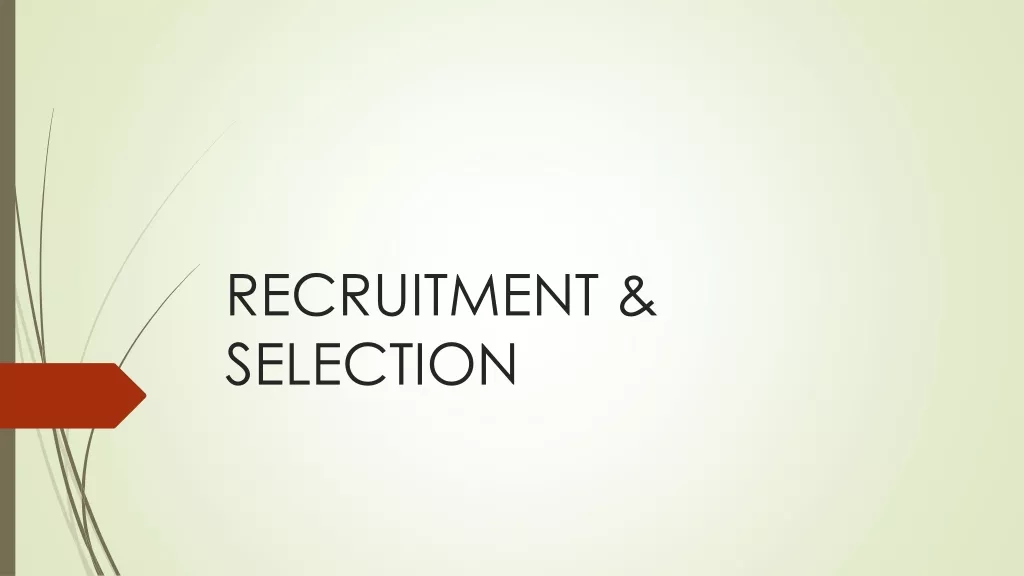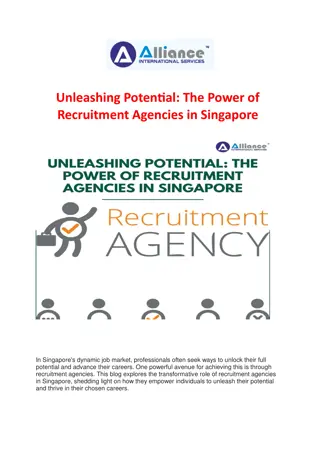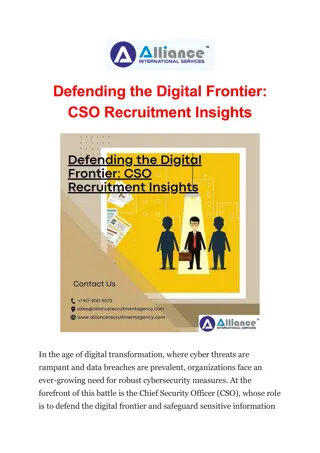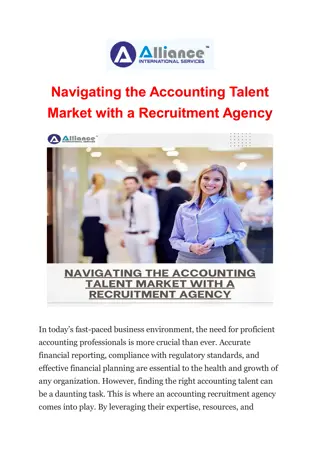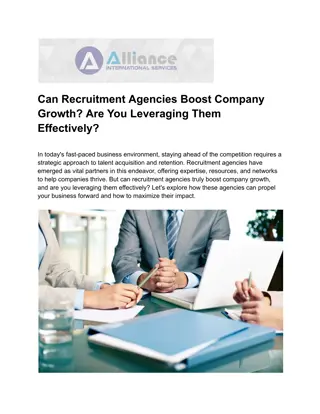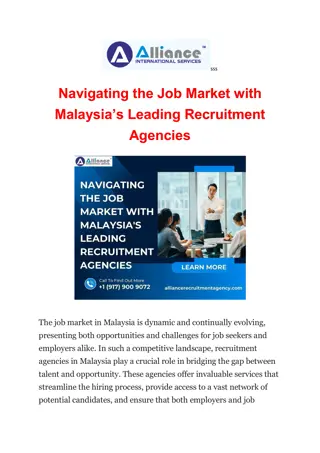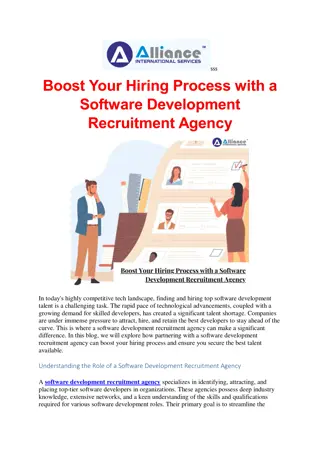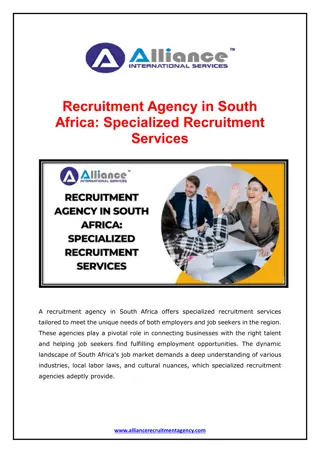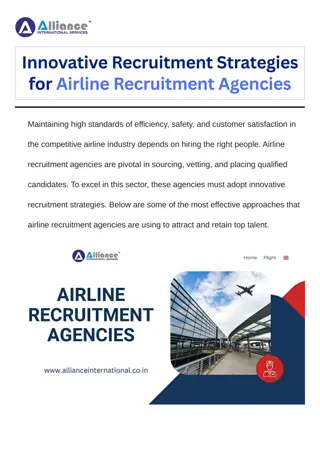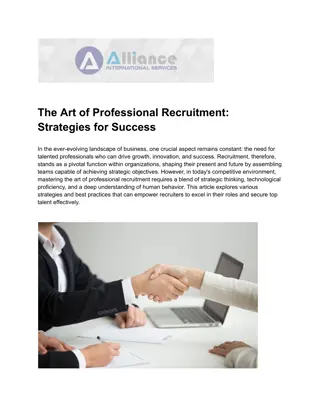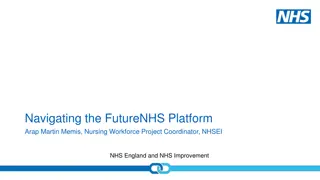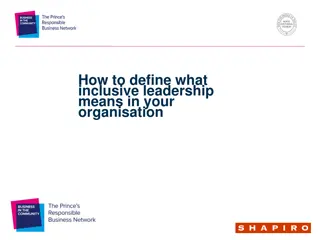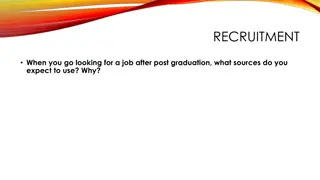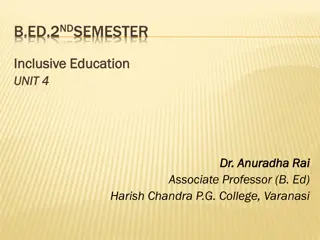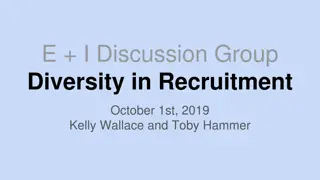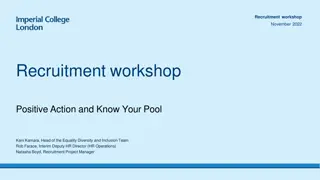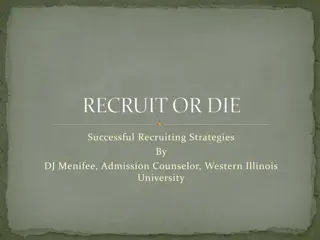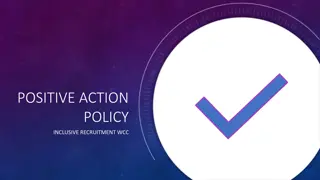Effective Tips for Inclusive Recruitment Process
Effective inclusive recruitment requires avoiding biases, implementing positive action, using structured methods, fair short-listing, asking good interview questions, having model answers, and assessing candidates objectively. Overcoming biases and promoting diversity are essential to hiring the best talents fairly.
Download Presentation

Please find below an Image/Link to download the presentation.
The content on the website is provided AS IS for your information and personal use only. It may not be sold, licensed, or shared on other websites without obtaining consent from the author. Download presentation by click this link. If you encounter any issues during the download, it is possible that the publisher has removed the file from their server.
E N D
Presentation Transcript
Tips to support inclusive recruitment
Remember Don t assume your expertise & experience allows you to jump procedural steps The purpose of recruitment techniques is to i) appoint the best person ii) ensure fairness and equality. Don t dismiss robust, structured methods as overly-bureaucratic you risk a bad appointment and inequality
Be aware of bias The Halo Effect Stereotyping Priming Confirmation bias Homophily 3
Positive Action Positive action is lawful under the Equality Act 2010 A candidate from an underrepresented group may be appointed when they are of equally merit as the other best candidate(s) UCL Council has approved use of it for: Women in Grades 9 and 10 roles BME candidates
Short-listing Operate on principle of inclusion rather than exclusion look for strengths not short-comings Use only original agreed criteria on person spec do not allow the introduction of new criteria Only consider facts avoid assumptions, to minimise risk of stereotyping Score each candidate using a pre-agreed scoring system and matrix if done properly should be a high degree of consensus Aim to short-list horizontally not vertically this limits influence from previous responses impacting your view of next for each applicant
Good interview questions Keep it simple just ask one question at a time Quantity is not a proxy for quality Aim it to probe thought-processes
Model answers It is crucial to have model answers ready against which you can assess the given answers The model answers can be flexible and allow for originality but must be measurable What answer to a skills-specific question constitutes a 5 instead of a 4? The closer you can get to objective metrics here, the better You can weight attributes, according to their importance
Assessing interview candidates Rating candidates against each other, rather than against the objective job criteria could lead to: A distorting effect of how strong or weak the candidates are You are likely relying on whether a candidate looks the part You are more likely to decide on who we like best Don t do it!
Objective scoring neutralises bias Each interviewer should always score each answer immediately Waiting until end to score each question risks forgetting an early or less-vivid but high- quality answer It also favours candidates whose speaking style favours storytelling (can have cultural implications) Never discuss candidates between interviews and be careful of body language (priming)
Objective scoring Compare and score candidates horizontally, not vertically Compare each candidates answer to question 1, then each answer to question 2, etc Avoid overspill do not be unduly influenced by a very good or poor answer to question 1 Do not discuss your impressions of the candidates until you have added up the final scores Do not be unduly influenced by the chair (or most dominant member) of the panel
No bias commitment Instruct yourself to be fair with a pledge card: I will make sure that when I interview candidates, I will treat them all fairly and objectively. I will not stereotype or make assumptions about them. I will treat them as an individual. Undertake a pre-mortem what could go wrong then less likely to happen Look to disconfirm stereotypes Challenge other panel members/debate decisions

 undefined
undefined



